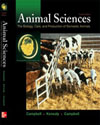
Artificial Insemination |  |
Chapter Summary| Artificial insemination was used in mating horses and dogs at least two centuries ago. However, its commercial application for mating farm animals was not made practical until improved communications, refrigeration, transportation, and especially advances in reproductive physiology research paved the way.
Artificial insemination has helped facilitate tremendous improvements in the genetic merit of farm animals during the past seven decades. The use of AI enables the animal breeder to assist the best in multiplying the fastest.
Largely because of the sizable number of females that can be mated to outstanding males, many livestock breeders use AI as a tool in improving animals. They thereby increase profits and provide consumers with more acceptable animal products and at reduced costs. In poultry the use of AI increases producer profits through improved fertility; in horses it offers a means of mating females to outstanding stallions that are often great distances away.
In the effort to provide more meat and milk for humans, the use of AI to spread superior genetic germ plasm holds great opportunities, especially in light of the fact that only about 5 percent of the cattle of developing countries (in comparison with more than 40 percent of the cattle of developed nations) are artificially inseminated.
|
|
|